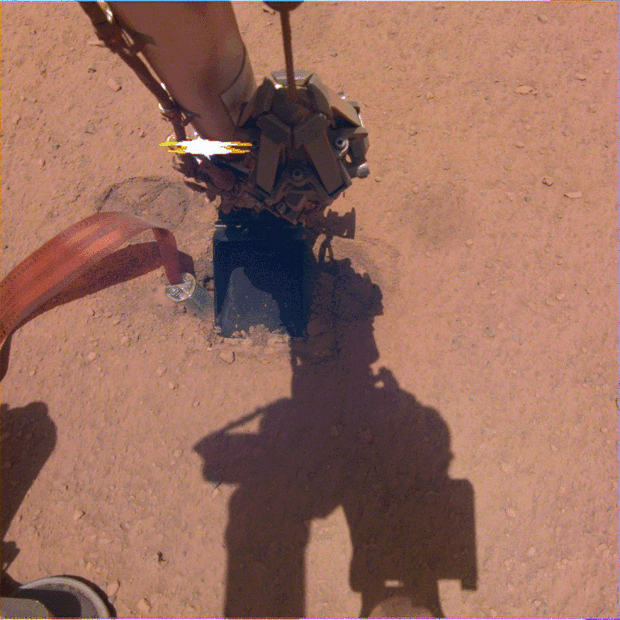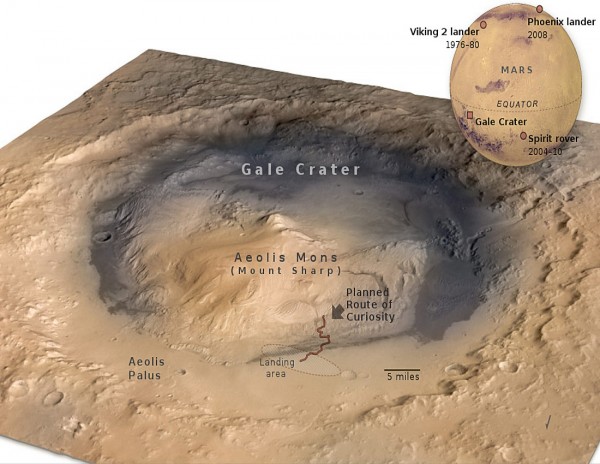|
|
Post by MartinT on Jun 24, 2019 7:39:18 GMT
Interesting.
Yes, I would trust NASA's release over the 'popular media'!
|
|
|
|
Post by jandl100 on Jul 2, 2019 6:56:24 GMT
|
|
|
|
Post by MartinT on Jul 2, 2019 7:00:37 GMT
Clever. You don't want to get that wrong, especially with the time lag.
|
|
|
|
Post by jandl100 on Oct 29, 2019 12:03:57 GMT
Oh noooooooooooooooooooooo.  The burrowing heat probe aka the mole, that was having problems digging to any significant depth in the Martian soil, has popped out of its burrow.  This was most definitely not to plan. www.space.com/mars-insight-mole-heat-probe-pops-out-of-hole.htmlIn formal technical jargon, this is what is known as a CFU ... a complete fuck up.   |
|
|
|
Post by jandl100 on Nov 4, 2019 18:48:12 GMT
|
|
|
|
Post by MartinT on Nov 5, 2019 6:18:44 GMT
Another world that looks like it could be ours.
|
|
|
|
Post by jandl100 on Nov 5, 2019 6:35:57 GMT
Here's a view of Gale Crater from space, with Mount Sharp in the centre, the overlaid line showing where the Curiosity Rover is travelling.  And another image from space showing the crater and central mountain ....  |
|
|
|
Post by jandl100 on Dec 1, 2019 8:15:40 GMT
Oh noooooooooooooooooooooo.  The burrowing heat probe aka the mole, that was having problems digging to any significant depth in the Martian soil, has popped out of its burrow.  This was most definitely not to plan. www.space.com/mars-insight-mole-heat-probe-pops-out-of-hole.htmlIn formal technical jargon, this is what is known as a CFU ... a complete fuck up.  It looks to me that NASA are going to have to give up on the (not)burrowing heat probe. The latest 'plan' seems to be using the robotic arm to lean on the probe into the the Martian soil to prevent it bouncing back out. But that only gets its top to surface level - very different to the hoped-for 16 feet / 5 metres. bgr.com/2019/11/30/nasa-news-mars-insight-mole-probe/This was a major part of the intended scientific programme of the whole $billion project and was intended to understand interior heat flow, and so test the theory that Mars was born from the same planet-forming material as Earth and the Moon. How Mars' heat-producing elements are distributed in the planet today is still an open question. The information from InSight's heat flow probe and its seismometer together could help answer this question. mars.nasa.gov/insight/spacecraft/instruments/hp3/So this probe problem restricts the usefulness of the seismometer as well. The other 2 main parts of the mission are a seismometer (for measuring Marsquakes) and a "planet-wobble detector" to determine Mars' interior structure. mars.nasa.gov/insight/spacecraft/instruments/seis/mars.nasa.gov/insight/spacecraft/instruments/rise/ |
|
|
|
Post by MartinT on Dec 1, 2019 12:32:01 GMT
I suppose they will have tested it with different surface material back at home on the clone probe. I wonder if they managed to replicate the problem?
|
|
|
|
Post by jandl100 on Feb 23, 2020 8:38:39 GMT
|
|
|
|
Post by jandl100 on Feb 24, 2020 17:54:09 GMT
|
|
|
|
Post by jandl100 on Feb 25, 2020 9:33:28 GMT
|
|
|
|
Post by jandl100 on Mar 5, 2020 7:11:16 GMT
A jawdrop video-isation of a high rez 1.8 billion pixel panorama from the Curiosity rover on Mars
|
|
|
|
Post by MartinT on Mar 5, 2020 8:02:59 GMT
Wow - just wow!
|
|
|
|
Post by jandl100 on Mar 21, 2020 9:12:15 GMT
|
|
|
|
Post by jandl100 on Jan 15, 2021 5:03:26 GMT
|
|
|
|
Post by jandl100 on Feb 15, 2021 3:53:21 GMT
The Insight Lander has recently officially had its 2 year mission life extended. One anticipated problem is causing concern as dust builds up on its deliberately oversized solar energy panels. With previous rovers Martian dust devils had helped clear some dust off of their panels, and it had been expected that the same thing would happen with Insight. But it's been unlucky so far, with several swirling dust devils being observed to pass by but none close enough to have a cleaning effect. Power output from the panels is now down to 27% of maximum due to dust cover and the Lander is having some of its activities curtailed for the Martian winter, when solar irradiance is reduced, to conserve power. phys.org/news/2021-02-insight-winter-dusty-mars.html?utm_source=nwletter&utm_medium=email&utm_campaign=daily-nwletter |
|
|
|
Post by MartinT on Feb 15, 2021 6:27:35 GMT
That's a surprising reduction in power. I would have thought it will be quite limiting in what they can do at any one time. Bravo for being able to extend the mission, though.
|
|
|
|
Post by jacob09 on Apr 13, 2021 14:28:43 GMT
Perhaps, the efforts of Perseverance will help them to know more about Martian soil. If I'm not mistaken, this rover has the instruments for catching samples and identifying biosignatures, including biosignatures in soil. Anyway, the Perseverance rover will be more successful.
|
|
|
|
Post by jandl100 on Apr 15, 2021 13:50:31 GMT
|
|